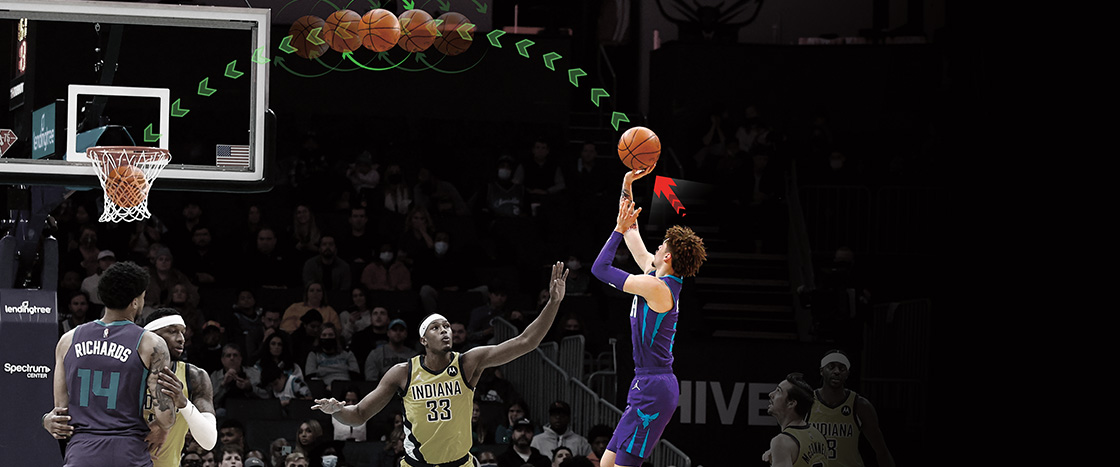Pro basketball player LaMelo Ball of the Charlotte Hornets jumps into the air. In one smooth motion, he flicks his wrist, sending the ball soaring toward the hoop. This is called a jump shot, and it’s one of the main ways basketball players score points.
Shooting from the highest point of a jump has two advantages. One is that it makes it harder for defenders to block the shot. Shooting from high up also helps players shoot the ball in a high arc, or curved path. Shots with higher arcs give the ball, which is about 9 inches wide, a greater chance of falling through the center of the 18-inch-wide hoop. LeMelo Ball sinks his shot. SWISH—nothing but net!

